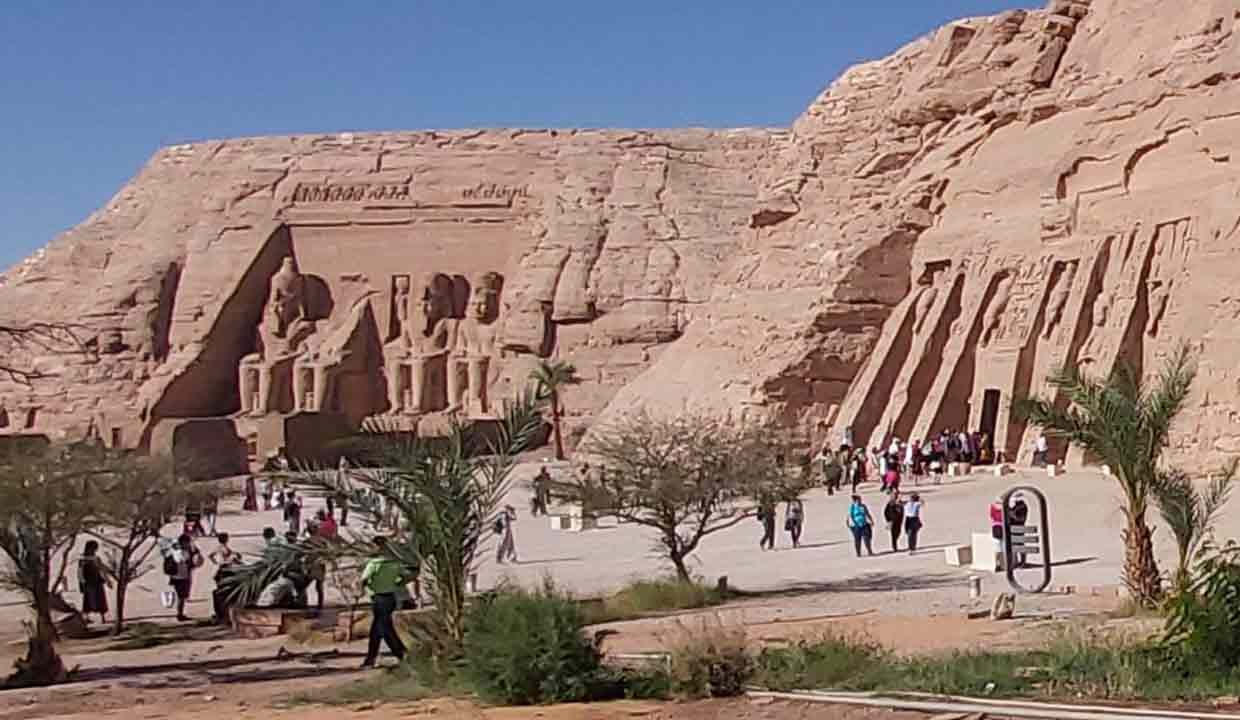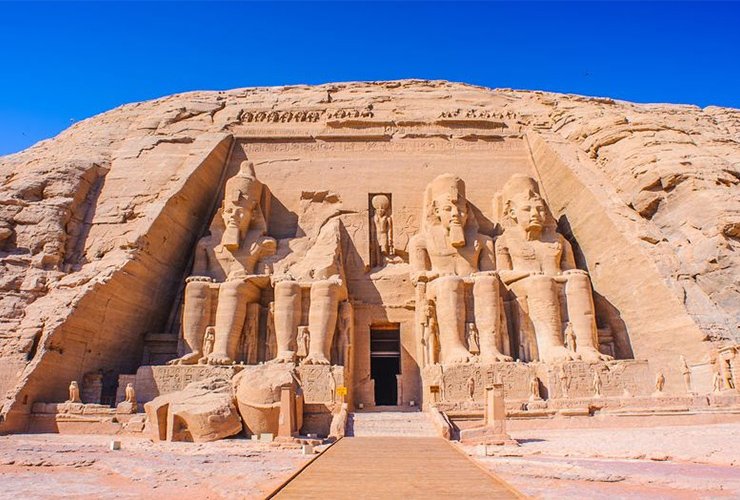6 Facts about Amazing Abu Simbel Temples: Egypt’s Sentinel.
Abu Simbel Temples: Behold Ramses II’s grandeur and a marvel of modern preservation.
Tucked away near the southern borders of Egypt, the Abu Simbel Temples are not just an archaeological wonder, but also a testament to both the grandeur of the ancient Egyptian civilization and modern engineering marvels. These rock-hewn temples, commissioned by Pharaoh Ramses II, not only showcase the might and vision of their creator but also encapsulate a story of remarkable preservation and relocation in the 20th century.
Ramses II (reigned 1279-13 BCE) built two temples at Abu Simbel, which are now located in Aswan governorate in southern Egypt. In ancient times the area was at the southern frontier of pharaonic Egypt, facing Nubia. The four colossal Ramses statues in front of the main temple are magnificent works of ancient Egyptian art. The temples were saved from the rising waters of the Nile River caused by the construction of the Aswan High Dam in the 1960s thanks to a complex engineering marvel.
1. Historical Background:
Constructed during the reign of Pharaoh Ramses II in the 13th century BCE, the temples were intended as a lasting monument to the king and his queen Nefertari. They also served a strategic purpose, emphasizing Egypt’s power and religious commitment to deter its southern neighbors.
The Abu Simble temple is one of the most impressive and spectacular buildings in Egypt.
The temple is made up of several temples, such as the Temple of Ramses II and the Temple of Nefertari, the pharaoh’s favorite wife. But during the construction of Lake Nasser, many Egyptian antiquities disappeared under the waters of the lake. Thanks to a UNESCO campaign, the work of saving the Nubian temples began in 1960. like the two temples of Abu Simbel: those of Pharaoh Ramses II and his wife Nefertari, both located a few meters from the banks of the Nile.
Also on February 22 and October 22 each year, the eyes of the world turn to the extreme south of Egypt, where the tourist city of Abu Simbel witnesses a unique astronomical event, in which the sun embraces the face of the king Ramses in a phenomenon that the ancient Egyptians personified thousands of years ago inside their ancient temples, thus embodying one of the greatest feats of engineering in Egyptian history.
2. Architectural Grandeur:
- The Great Temple: Dedicated to Ramses II, this temple features four colossal statues of the seated pharaoh at its entrance. Within, intricate murals depict the Battle of Kadesh, emphasizing the prowess and divine status of the king.
- The Small Temple: Dedicated to Queen Nefertari and the goddess Hathor, it’s a rarity in ancient Egyptian art to see a queen represented as the same size as a pharaoh, signifying Nefertari’s special status.
3. The Solar Phenomenon:
The temples are oriented in such a way that twice a year, rays of the sun penetrate the sanctuary to illuminate statues of Ramses II, Ra, and Amun, leaving only Ptah, the god of darkness, in shadow. This remarkable event, likely intended to highlight Ramses II’s divine nature, draws crowds even today.

4. Preservation and Relocation:
In what is often hailed as one of the greatest feats of archaeological engineering, the entire Abu Simbel complex was relocated in the 1960s. The creation of the Aswan High Dam threatened to submerge the temples. With global cooperation under UNESCO, the temples were meticulously cut into blocks, moved to higher ground, and then reassembled, ensuring their preservation.
5. Visiting Abu Simbel:
While remote, modern-day facilities make Abu Simbel accessible. Most visitors arrive either by flight to Abu Simbel Airport or by road from Aswan. The temples can get crowded, especially during the solar phenomenon, so planning ahead is advisable.
6. Cultural Significance:
Beyond their architectural brilliance, the Abu Simbel temples offer a deep dive into the religious and cultural ethos of the New Kingdom era of ancient Egypt. They emphasize the pivotal role of pharaohs, not just as rulers but as mediators between the gods and humans.
Conclusion:
Abu Simbel Temples, with its colossal statues and detailed carvings, stands as a symbol of both ancient ambition and modern perseverance. A visit provides not only a visual feast but also a journey through time, reflecting on the legacies of both the ancient world and the global collaboration of the modern era. In its stones and stories, Abu Simbel captures the spirit of a civilization that, thousands of years on, continues to captivate and inspire.



Comment (0)